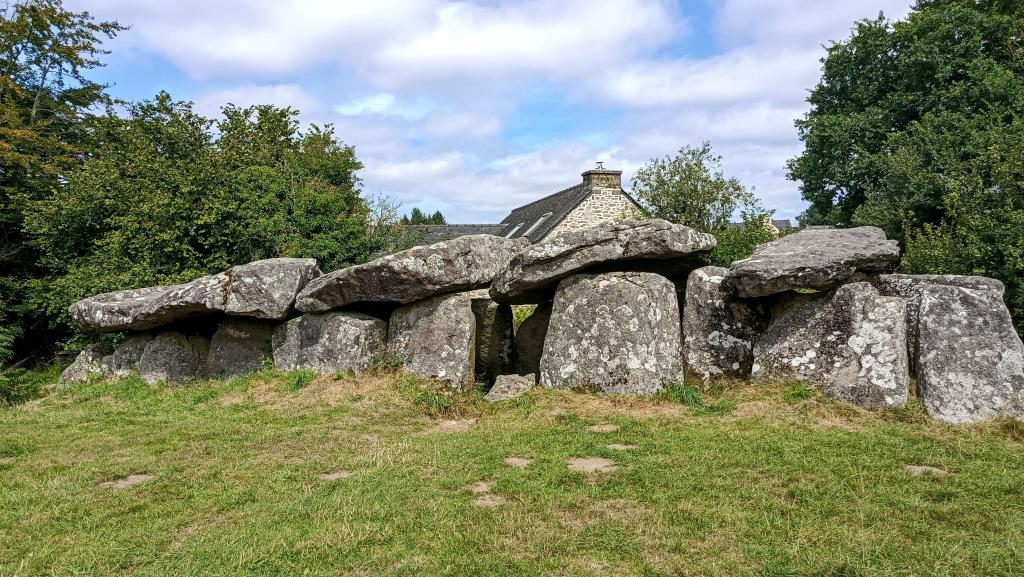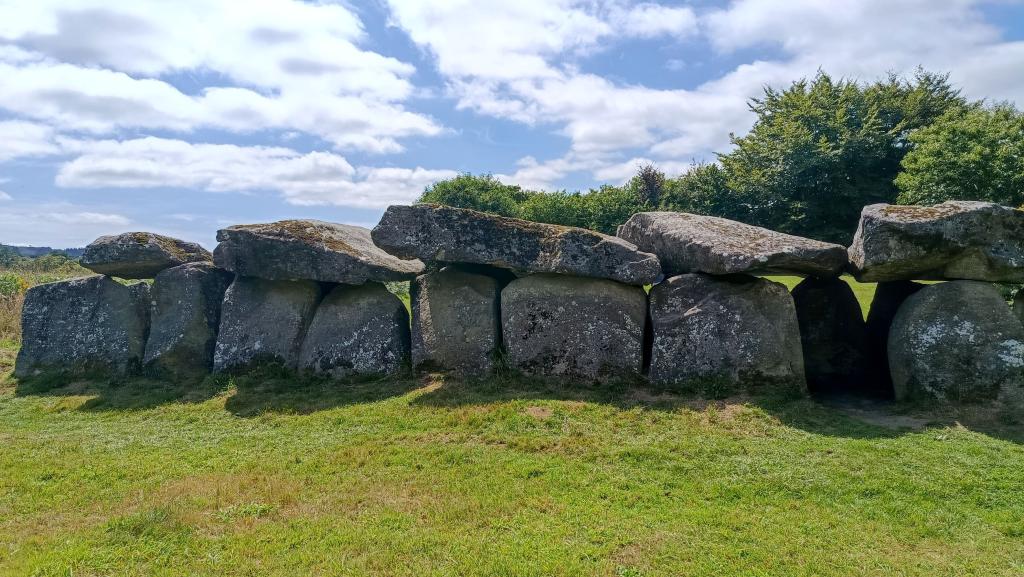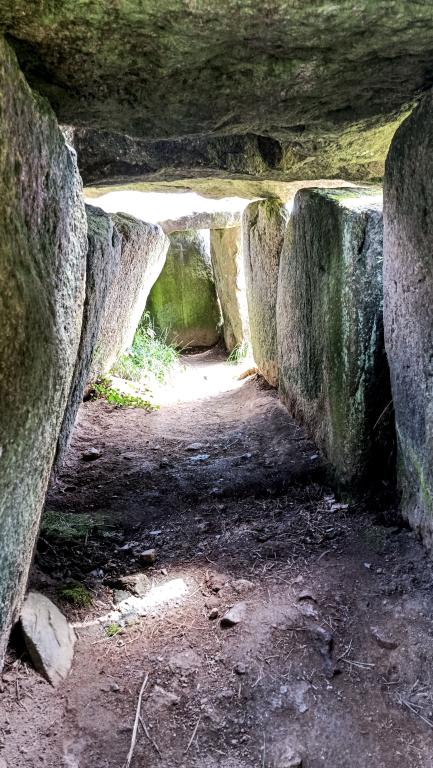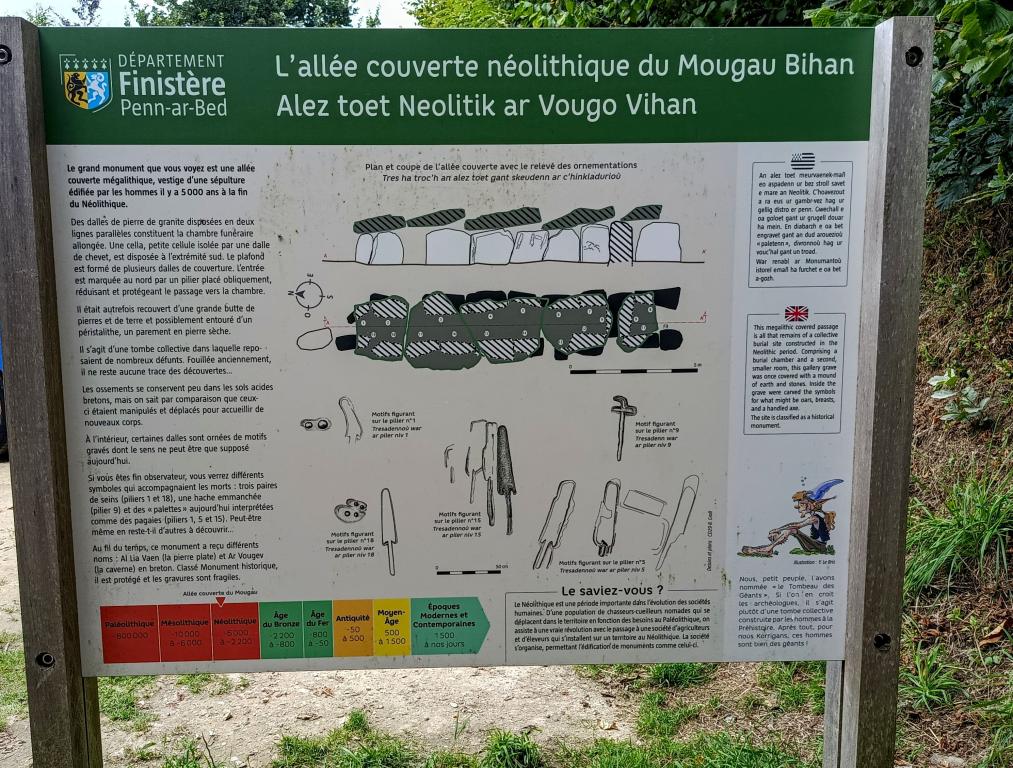





Near the village of Mougau-Bihan, the covered alleyway of Mougau measures 14 meters in length and dates back to the second millennium BCE. It is renowned for the carved decorations in its main chamber.
According to local beliefs, this site would be the tomb of giants, and Bugel Noz, a rock overlooking Mougau, would be a nocturnal promenade spot for the korrigans, fairy-like creatures similar to gnomes.
This monument, located 1.7 km from the center of the village of Mougau Bihan, consists of granite walls with a horizontal ceiling formed by four massive slabs and a fifth one covering the northern cell.
Although maps designate it as a druidic altar, it is actually a collective tomb where members of a local farmer or herdsman clan were buried.
Carved motifs adorn some of the pillars, representing symbols of the mother goddess through double-breast figures, as well as weapons from the era such as daggers and spear points.
Perdu en pleine campagne mais il faut faire le détour…😍😍😍 Parking à proximité Et l’accès à nos animaux préférés est autorisé 🦮🐕🦺🐩